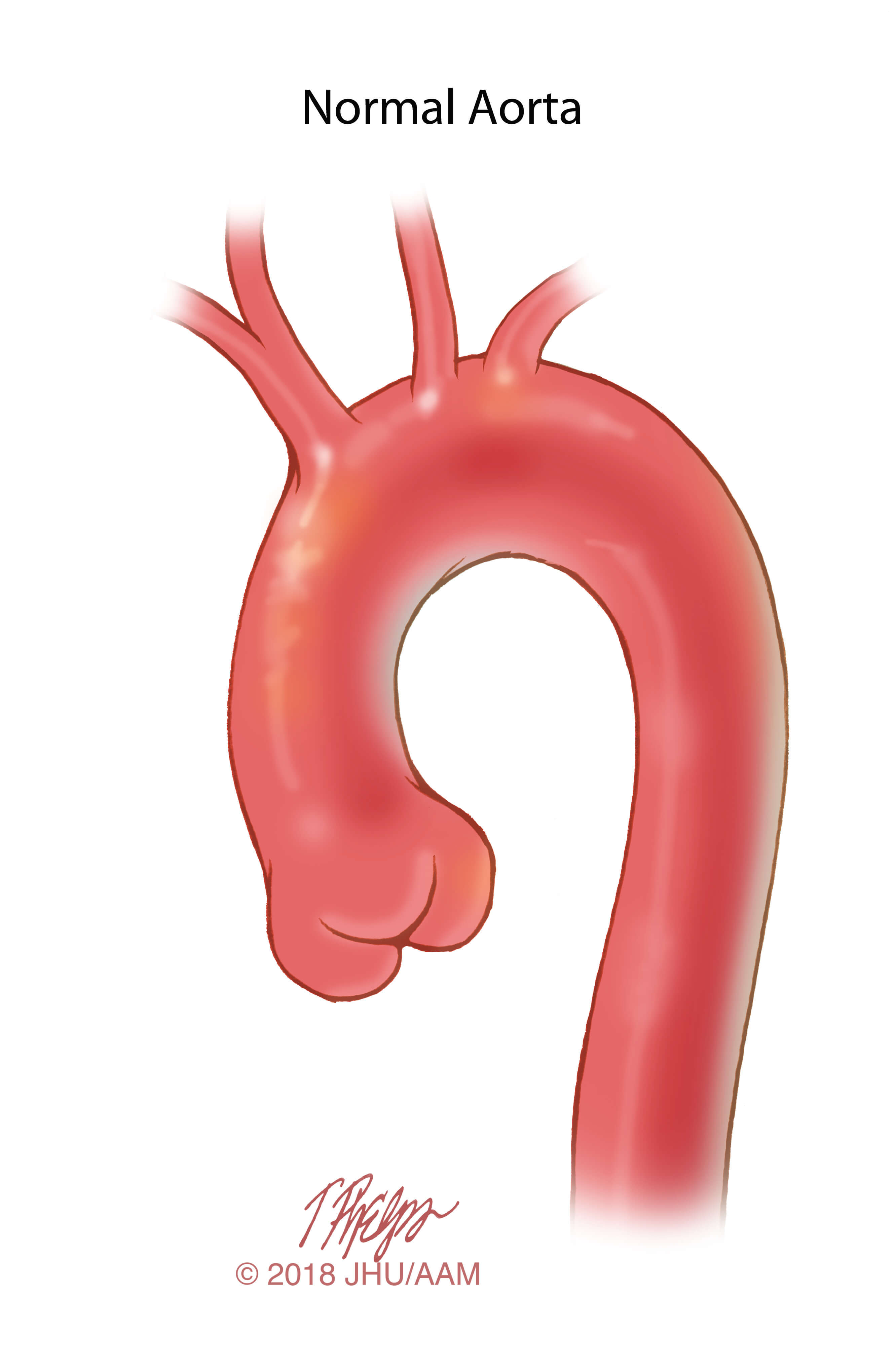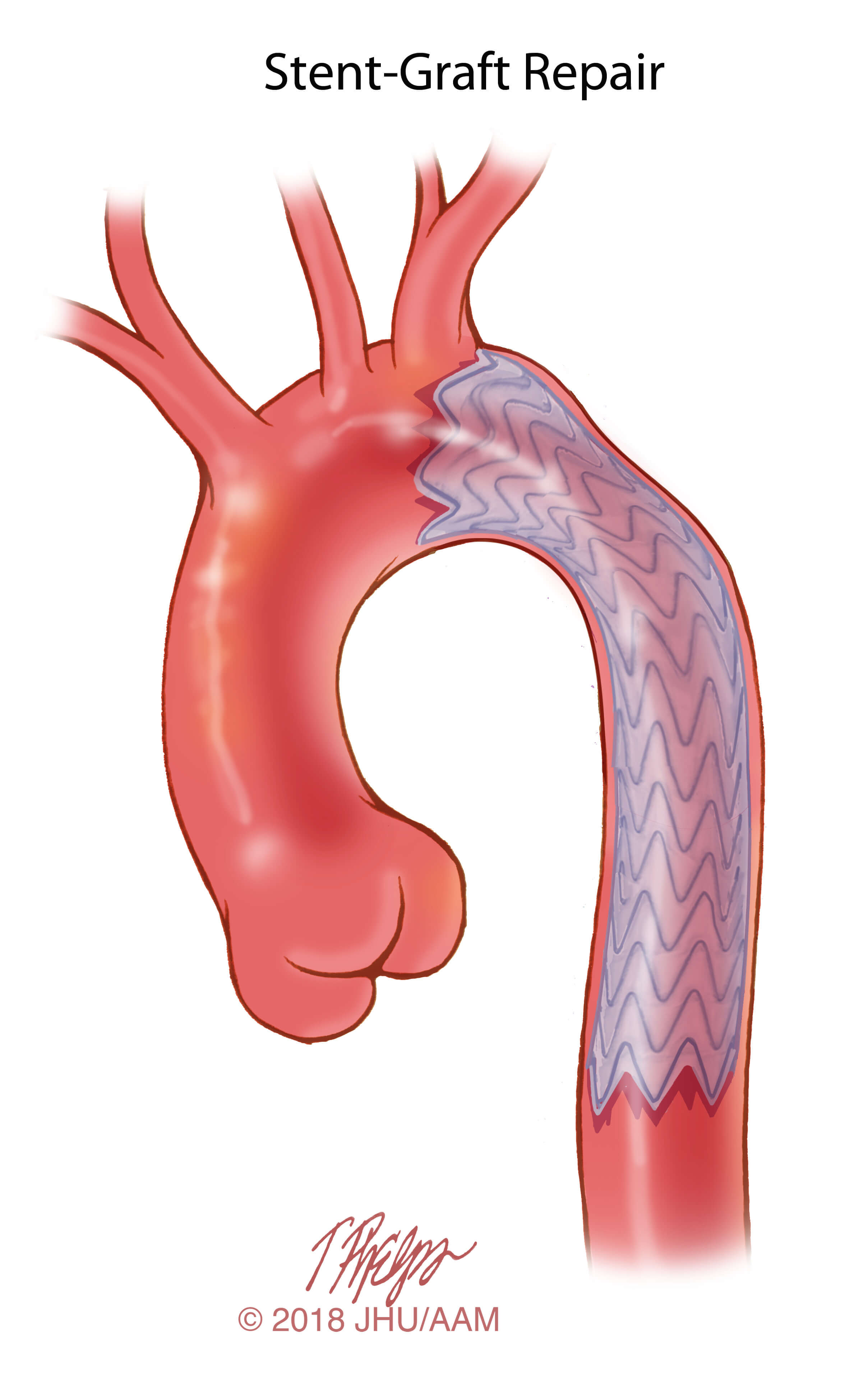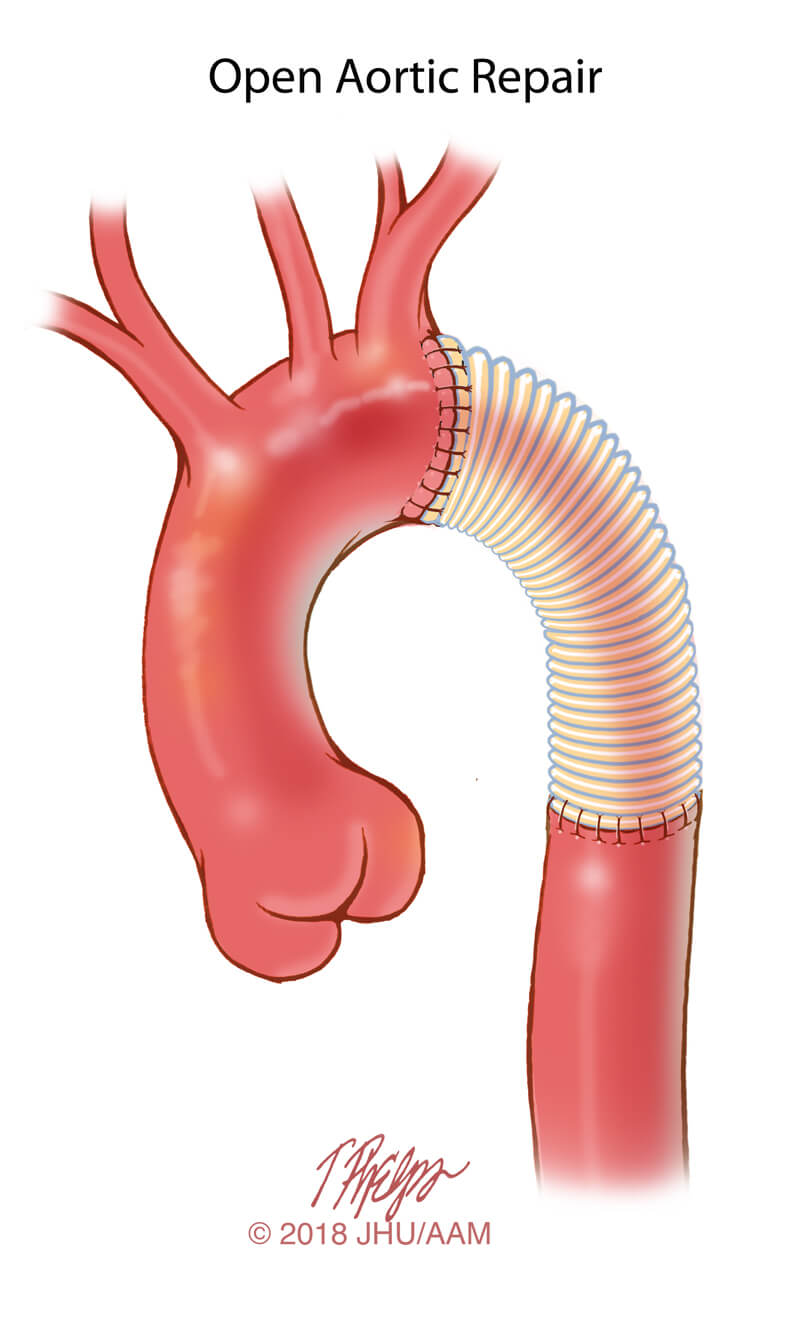Adult Congenital Aortic Syndrome

Congenital aortic syndrome describes a rare condition characterized by abnormal anatomy of the thoracic aorta, the main artery that carries blood from the heart to the body. In adult congenital aortic syndrome, symptoms don’t occur until adulthood.
Patients who have congenital aortic syndrome may have either an aberrant right subclavian artery or aortic coarctation. Aberrant right subclavian artery is a condition where the artery feeding a person’s right arm comes off the wrong side of the thoracic aorta.
Aortic coarctation describes a significant
narrowing of the thoracic aorta.
Congenital Aortic Syndrome: What You Need to Know
Aberrant Subclavian Artery
- Common symptoms of an aberrant subclavian artery are difficulty swallowing, difficulty breathing or chest pain.
- Diagnosing an aberrant subclavian artery requires an upper endoscopy study, a swallowing study, and a CT scan or MRI.
- Treatment of an aberrant subclavian artery usually involves bypass surgery, requiring a small cut on the neck to connect the carotid artery to the subclavian artery. Occasionally, a second surgery is required to fully resolve all symptoms.
- The second surgery varies depending on individual anatomy, and can occasionally be performed using minimally invasive (endovascular) techniques with a stent graft.
Aortic Coarctation
- Common symptoms of aortic coarctation are high blood pressure, headaches, chest pain, shortness of breath, nosebleeds and claudication (leg pain while walking).
- Diagnosing congenital aortic syndrome requires a physical exam and a CT scan or MRI to confirm the diagnosis.
- Aortic coarctation is often treated with innovative techniques, including minimally invasive surgical techniques such as stenting and angioplasty.
- Occasionally, a more complex open surgery to replace the affected portion of the aorta is required.
Middle Aortic Syndrome
- Common symptoms of middle aortic syndrome include high blood pressure, headaches, early tiredness after activity, and pain in both legs with walking.
- Diagnosing middle aortic syndrome usually requires a physical exam and a CT scan or MRI to confirm the diagnosis.
- Treatment of middle aortic syndrome varies depending on the location of the problem can sometimes be treated with minimally invasive surgical techniques such as stenting and angioplasty.
- In more complicated cases, treatment for middle aortic syndrome may require more complex open surgery to repair or replace the affected portion of the aorta.


Congenital Aortic Syndrome Treatment: Why Choose Johns Hopkins
Adult congenital aortic syndromes are rare, so many physicians are not comfortable treating them. At The Johns Hopkins Hospital, we have extensive experience treating patients with both aberrant subclavian arteries and aortic coarctation. We have mastered minimally invasive endovascular techniques that will effectively treat your symptoms while minimizing your recovery time. We are also very experienced in open surgery, and have developed a skilled team that can successfully perform complex open aortic reconstructions when necessary. Your physician
will talk with you about your best treatment option.


